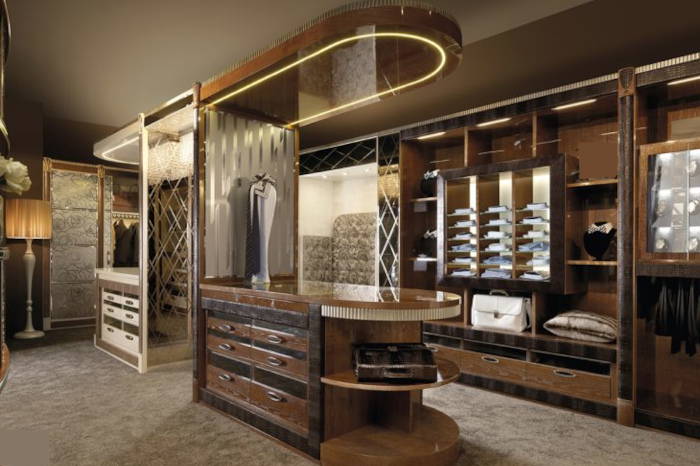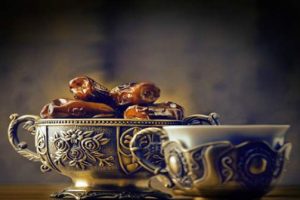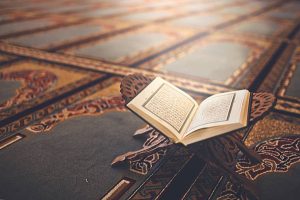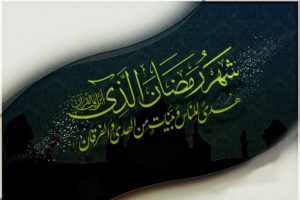
1. Wear your best clothing on the days of Eid and Jumu’ah, as these days are the greatest and most virtuous days. It is preferable to wear white clothing on these days.[1]
عن عبد الله بن سلام أنه سمع رسول الله صلى الله عليه وسلم يقول على المنبر في يوم الجمعة: ما على أحدكم لو اشترى ثوبين ليوم الجمعة سوى ثوب مهنته (سنن ابن ماجة، الرقم: ١٠٩٥)[2]
Hazrat Abdullah bin Salaam (radhiyallahu ‘anhu) reports that he heard Hazrat Rasulullah (sallallahu ‘alaihi wasallam) mention while he was on the mimbar delivering the khutbah on the day of Jumu’ah, “Why do you not purchase a pair of clothing and keep it exclusive for wearing on the day of Jumu’ah, apart from your normal daily clothing.”
عن جابر بن عبد الله قال: كانت للنبي صلى الله عليه وسلم جبة يلبسها في العيدين ويوم الجمعة (صحيح ابن خزيمة، الرقم: ١٧٦٦)[3]
Hazrat Jaabir (radhiyallahu ‘anhu) reports that Rasulullah (sallallahu ‘alaihi wasallam) had a jubbah (a robe or long garment) that he would wear specially on the days of Eid and the day of Jumu’ah.
2. The clothes of women should not be so thin that they are transparent due to which the body beneath becomes exposed. With the exception of her hands and feet, a woman’s entire body is satr. Hence, if the clothing is see-through, then her satr will be exposed before men. Women wearing this type of clothing have been cursed in the Hadith.[4]
عن أبي هريرة قال: قال رسول الله صلى الله عليه وسلم: صنفان من أهل النار لم أرهما قوم معهم سياط كأذناب البقر يضربون بها الناس ونساء كاسيات عاريات مميلات مائلات رءوسهن كأسنمة البخت المائلة لا يدخلن الجنة ولا يجدن ريحها وإن ريحها ليوجد من مسيرة كذا وكذا (صحيح مسلم، الرقم: ٢١٢٨)
Hazrat Abu Hurairah (radhiyallahu ‘anhu) reports that Hazrat Rasulullah (sallallahu ‘alaihi wasallam) said, “There will be two groups (in my Ummah) who will be punished in Jahannum. These two groups I have not yet seen (i.e. they will emerge after my demise). One group will carry whips with them resembling the tails of cattle, with which they will (oppressively) lash the people. The second group will be those women who will wear clothes yet they will still be naked (i.e. tight fitting or flimsy clothing). They will attract men to themselves, and they themselves will be inclined towards them. Their heads will resemble the humps of the Bukhti camels (i.e. they will wear buns which will be high like camel humps). They will not enter Jannah nor smell its fragrance, despite its fragrance being perceivable from a great distance away.”
3. Just as women should not wear transparent and see-through clothing, they should also not wear clothing that is tight fitting or body hugging. Rather, they should conceal their entire bodies by wearing flowing, loose-fitting and concealing clothing and by also donning the niqaab.[4]
It is reported regarding Hazrat Asmaa (radhiyallahu ‘anha) that (when she reached old age,) her beloved son, Hazrat Munzir bin Zubair (rahimahullah), after returning from Iraq, sent her a cloth as a gift which was of very fine and superior quality. She had lost her sight, and so held the fabric in her hand, feeling it carefully. Then, with disappointment, she said, “Return the gift to him.” When the cloth was returned to Hazrat Munzir (rahimahullah), he was hurt. He came to Hazrat Asmaa (radhiyallahu ‘anha) and said to her, “O my mother, the cloth is not transparent! (Hence, it is fine for you to wear.)” Hazrat Asmaa (radhiyallahu ‘anha) replied, “It may not be transparent, but due to it being tight, it will still reveal the shape of the body.” He thereafter bought for her common garments made in Marw and Quhistaan. She accepted them saying, “It is these types of garments that you should give me to wear.”[5]
عن عائشة قالت: كان الركبان يمرون بنا ونحن مع رسول الله صلى الله عليه وسلم محرمات فإذا حاذوا بنا سدلت إحدانا جلبابها من رأسها على وجهها فإذا جاوزونا كشفناه (سنن أبي داود، الرقم: ١٨٣٣)[6]
Hazrat Aaishah (radhiyallahu ‘anha) reports, “(On the occasion of hajj,) the caravans of travellers would pass by us while we were with Rasulullah (sallallahu ‘alaihi wasallam) in the state of ihraam. When they would come alongside us, we would take a portion of the jilbaab (shawl) and lower it to cover our faces (in the manner that it did not touch our faces). When they would pass us, we would remove it.”
4. When dressing, then commence wearing the clothing from the right side.[7]
عن أبي هريرة قال: كان رسول الله صلى الله عليه وسلم إذا لبس قميصا بدأ بميامنه (سنن الترمذي، الرقم: ١٧٦٦)[8]
Hazrat Abu Hurairah (radhiyallahu ‘anhu) reports that whenever Rasulullah (sallallahu ‘alaihi wasallam) used to put on a kurta, he would commence wearing it from its right side (e.g. the right sleeve before the left sleeve, etc.).
5. When undressing, then commence removing the clothing from the left side.[9]
عن أبي هريرة أن رسول الله صلى الله عليه وسلم قال: إذا انتعل أحدكم فليبدأ باليمين وإذا نزع فليبدأ بالشمال فلتكن اليمنى أولهما تنعل وآخرهما تنزع (سنن الترمذي، الرقم: ١٧٧٩، وقال: هذا حديث حسن صحيح)
Hazrat Abu Hurairah (radhiyallahu ‘anhu) reports that Hazrat Rasulullah (sallallahu ‘alaihi wasallam) said, “When anyone of you wears his shoes, then he should commence with the right foot, and when removing (his shoes), then he should commence with the left foot so that the right foot will be the first in wearing and the last in removing.”
[1] فالمنصوص أنه يستحب في الجمعة والعيدين لبس أحسن الثياب وفي شرح الملتقى من فصل اللباس ويستحب الأبيض (رد المحتار ١٥٠/٢)
[2] وقال البوصيري في مصباح الزجاجة (١٣١/١) : هذا إسناد صحيح رجاله ثقات
[3] وقال: إن كان الحجاج بن أرطأة سمع هذا الخبر من أبي جعفر محمد بن علي
[4] وإن كان ثوبها رقيقا يصف ما تحته ويشف أو كان صفيقا لكنه يلتزق ببدنها حتى يستبين له جسدها فلا يحل له النظر لأنه إذا استبان جسدها كانت كاسية صورة عارية حقيقة وقد قال النبي صلى الله عليه وسلم لعن الله الكاسيات العاريات وروي عن سيدتنا عائشة رضي الله عنها أنها قالت دخلت علي أختي السيدة أسماء وعليها ثياب شامية رقاق وهي اليوم عندكم صفاق فقال رسول الله صلى الله عليه وسلم هذه ثياب تمجها سورة النور فأمر بها فأخرجت فقلت يا رسول الله زارتني أختي فقلت لها ما قلت فقال يا عائشة إن المرأة إذا حاضت لا ينبغي أن يرى منها إلا وجهها وكفاها (بدائع الصنائع ١٢٣/٥)
[5] الطبقات لابن سعد: ٢٤٠/١٠
[6] وقال الحافظ في الدراية (٣٢/٢) : في إسناده يزيد بن أبي زياد وهو ضعيف
[7] اتفق العلماء أنه يستحب تقديم اليمنى في كل ما هو من باب التكريم كالوضوء والغسل ولبس الثوب والنعل والخف والسراويل (البناية ٢٤٨/١)
[8] وقال: وقد روى غير واحد هذا الحديث عن شعبة بهذا الإسناد عن أبي هريرة موقوفا ولا نعلم أحدا رفعه غير عبد الصمد بن عبد الوارث عن شعبة وقال الحافظ في ترجمة عبد الصمد المذكور: صدوق ثبت في شعبة (تقريب التهذيب، الرقم: ٤٠٨٠)
[9] ويستحب تقديم اليسار في ضد ذلك كالامتخاط والاستنجاء ودخول الخلاء والخروج من المسجد وقلع الخف والنعل والسراويل والثوب وأشباه ذلك (البناية ٢٤٨/١)
 Ihyaaud Deen An Effort to Revive Deen in Totality
Ihyaaud Deen An Effort to Revive Deen in Totality



